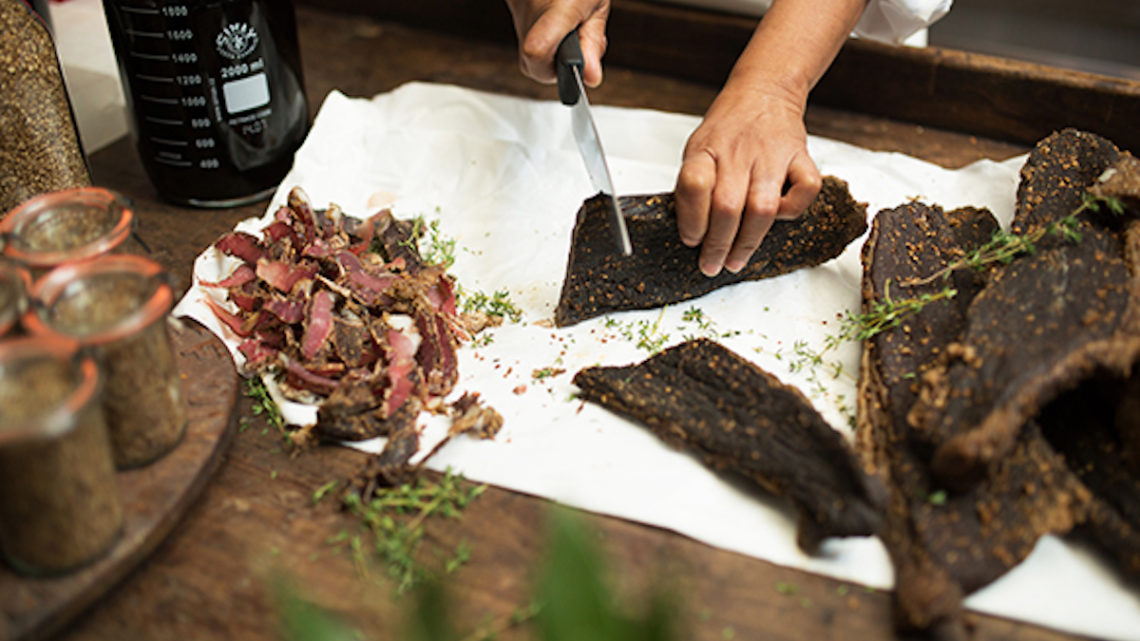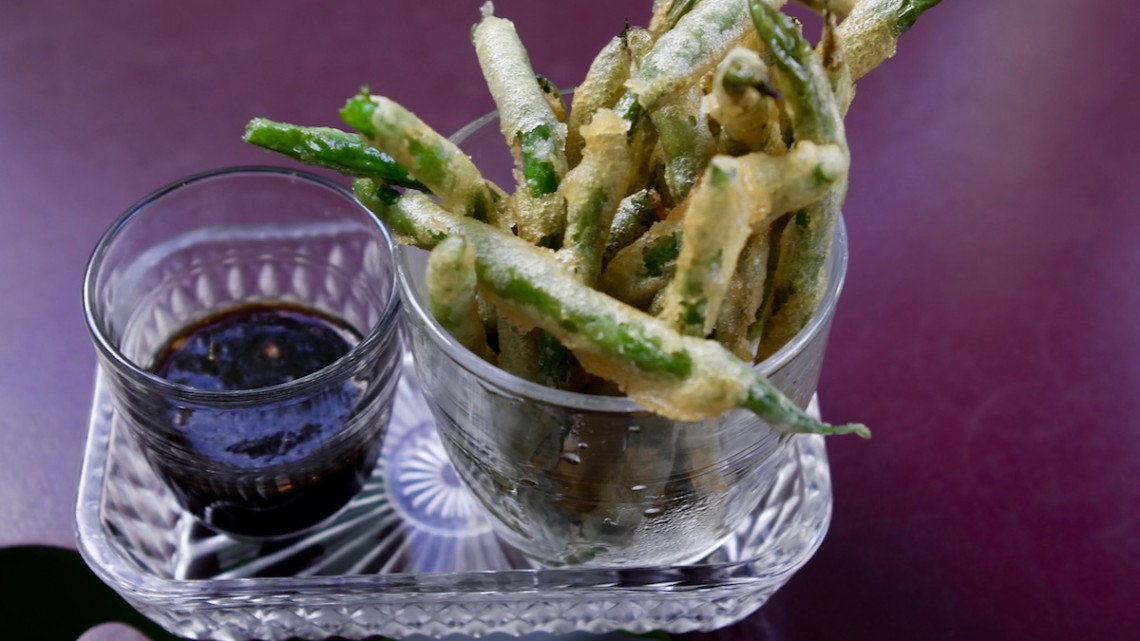Pita with lamb meatballs
Pita with Lamb Meatballs
- Main course
- Serves 2
- Meat
- Ready in about 30 minutes
Equipment
- Chopping board
- Chefs knife
- Vegetable peeler
- Frying pan
- Bowl
Pantry
- Olive oil (6 tablespoons)
- Salt
- Pepper
Ingredients
350 gr lamb meatballs
1 teaspoon ground cumin
200 ml Greek yoghurt
4 pita breads
1 bag lamb’s lettuce
3 tomatoes
1 cucumber
2 tablespoons tahini
Method
1
Slice the tomatoes. Peel the cucumber, halve lengthways, remove the seeds and slice thinly. Set the cut vegetables aside.
2
Season the Greek yoghurt with ground cumin to taste, salt, pepper and 1 tablespoon olive oil.
3
Heat a frying pan over medium heat with 2 tablespoons olive oil and fry the lamb meatballs for about 10 minutes until golden brown.
4
Grill the tomato slices in a grill pan with 1 tablespoon olive over medium heat and season with salt and pepper. Heat the pita breads up in a toaster or preheated oven at 180° C.
5
Dress the lamb’s lettuce with 1-2 tablespoons olive oil, salt and pepper. Cut the pita breads open and spread with a layer of yoghurt. Fill the pitas with the cucumber, tomatoes, lettuce, lamb meatballs and remaining yoghurt. Spoon the tahini over the vegetables. Mix together the remaining salad and cucumber and serve on the side.
Pita met lamsgehaktballetjes
- Hoofdgerecht
- Tweepersoons
- Vlees
- Bereidingstijd: ca. 30 minuten
Benodigdheden
- Snijplank
- Koksmes
- Dunschiller
- Koekenpan
- Kom
Voorraadkast
- Olijfolie (6 eetlepels)
- Zout
- Peper
Ingrediënten
1 bakje lamsgehaktballetjes (350 gr)
1 bakje komijnpoeder (1 theelepel)
1 bakje Griekse yoghurt (180 gr)
4 pitabroodjes
1 zakje veldsla (75 gr)
3 tomaten
1 komkommer
2 eetlepels Tahini
Bereiding
1
Snijd de tomaten in plakken. Snijd de komkommer over de lengte in tweeen, haal de zaadjes eruit en snijd in dunne plakjes. Zet de gesneden groenten opzij.
2
Breng de Griekse yoghurt op smaak met komijnpoeder, zout, peper en 1 eetlepel olijfolie.
3
Verwarm een koekenpan op medium vuur met 2 eetlepels olijfolie en bak de lamsgehaktballetjes in ongeveer 10 minuten goudbruin.
4
Grill de tomatenschijfjes in de pan met 1 eetlepel olijfolie en bestrooi met zout en peper. Verwarm de pitabroodjes in een broodrooster of in een voorverwarmde oven van 180° C.
5
Maak veldsla aan met 1-2 eetlepels olijfolie, zout en peper. Snijd de pitabroodjes open en bestrijk ze met de Griekse yoghurt. Vul de pitabroodjes met de komkommer, tomaten en veldsla, de lamsgehaktballetjes en de resterende Griekse yoghurt.Lepel er wat tahini overheen. Meng restant van de sla en komkommer door elkaar en serveer het in een schaaltje erbij.
Biltong
Biltong is a form of dried, cured meat that originated in Southern African countries (South Africa, Zimbabwe and Zambia). Various types of meat are used to produce it, ranging from beef and game meats to fillets of meat cut into strips following the grain of the muscle, or flat pieces sliced across the grain. It is related to beef jerky in that they are both spiced, dried meats; however, the typical ingredients, taste and production processes may differ.
The word biltong is from the Dutch bil ("buttock”") and tong ("strip" or "tongue").
Meat preservation as a survival technique dates back to ancient times. Indigenous peoples of Southern Africa, such as the Khoikhoi, preserved meat by slicing it into strips, curing it with salt, and hanging it up to dry. European seafarers preserved meat for their long journeys by curing meat in salt or brine. European settlers (Dutch, German, French) who arrived in southern Africa in the early 17th century used vinegar in the curing process, as well as saltpetre (potassium nitrate). The potassium nitrate in saltpeter kills Clostridium botulinum, the deadly bacterium that causes botulism while the acidity of the vinegar inhibits its growth. According to the World Health Organization, C. botulinum will not grow in acidic conditions (pH less than 4.6), therefore the toxin will not be formed in acidic foods. The antimicrobial properties of certain spices have also been drawn upon since ancient times. The spices introduced to biltong by the Dutch include pepper, coriander, and cloves.
The need for food preservation in South Africa was pressing. Building up herds of livestock took a long time, but with game in abundance in South Africa, traditional methods were called upon to preserve the meat of large African animals such as the eland in a warm climate. Iceboxes and refrigerators had not been invented yet. Biltong as it is today evolved from the dried meat carried by the wagon-travelling Voortrekkers, who needed stocks of durable food as they migrated from the Cape Colony north and north-eastward (away from British rule) into the interior of Southern Africa during the Great Trek. The meat was preserved and hung to be dried for a fortnight during the colder winter, with the cold temperatures aiding to further inhibit bacterial and fungal growth. Once suitably dried, the biltong was ready for packing in cloth bags, which allow air circulation to prevent mould.
While biltong is usually eaten as a snack, it can also be diced up into stews, or added to muffins or pot bread. Biltong-flavoured potato crisps have also been produced, and there are cheese spreads with biltong flavour. Finely shredded biltong is eaten on slices of bread and in sandwiches.
Biltong can be used as a teething aid for babies.
Biltong is a high-protein food.
Tempura Green Beans
If you're looking for an easy and delicious snack to serve with drinks, look no further. There isn't really and hard and fast recipe, so here's what you need to do:
Get some Japanese tempura flour from your local Asian grocer or supermarket. Whisk it up with cold sparkling water until it's the consistency of cream. Dip trimmed green beans into the batter and deep fry them in hot sunflower or vegetable oil.
In the meantime make a simple jalapeño ponzu dipping sauce. Take some soy sauce and season it to your liking with fresh or pickled chopped jalapeño, some yuzu juice (from a Japanese citrus fruit) or some lime juice if you can't find yuzu juice and some sesame oil.
Drain the tempura green beans on kitchen paper and serve the hot and crunchy with the dipping sauce on the side.



